ISYS90049 Business Analysis: Booking.com Process Modeling & Design
VerifiedAdded on 2023/06/14
|14
|2554
|269
Report
AI Summary
This report provides a comprehensive business analysis of Booking.com, focusing on its online booking process. It includes a detailed description of the business processes, a BPMN 2.0 process model, and a discussion of the assumptions made during the modeling process. The report covers key processes such as sign-in, registration, accommodation search, flight booking, and booking management. The BPMN diagrams illustrate various subprocesses, and the report concludes with a discussion of the modeling conventions used and the overall effectiveness of the model in representing Booking.com's processes. The analysis highlights the value delivered to the customer and the interactions between different entities within the Booking.com ecosystem.
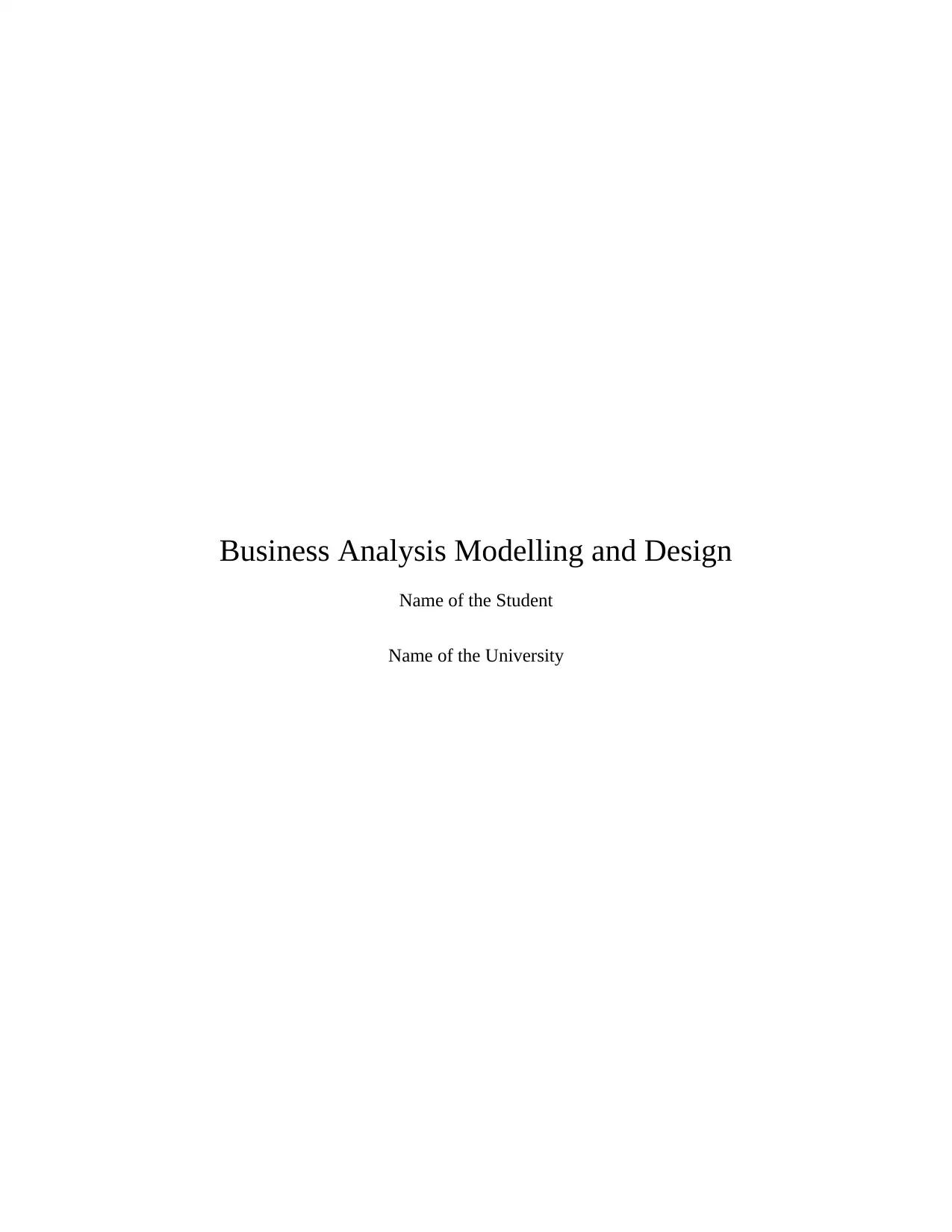
Business Analysis Modelling and Design
Name of the Student
Name of the University
Name of the Student
Name of the University
Paraphrase This Document
Need a fresh take? Get an instant paraphrase of this document with our AI Paraphraser
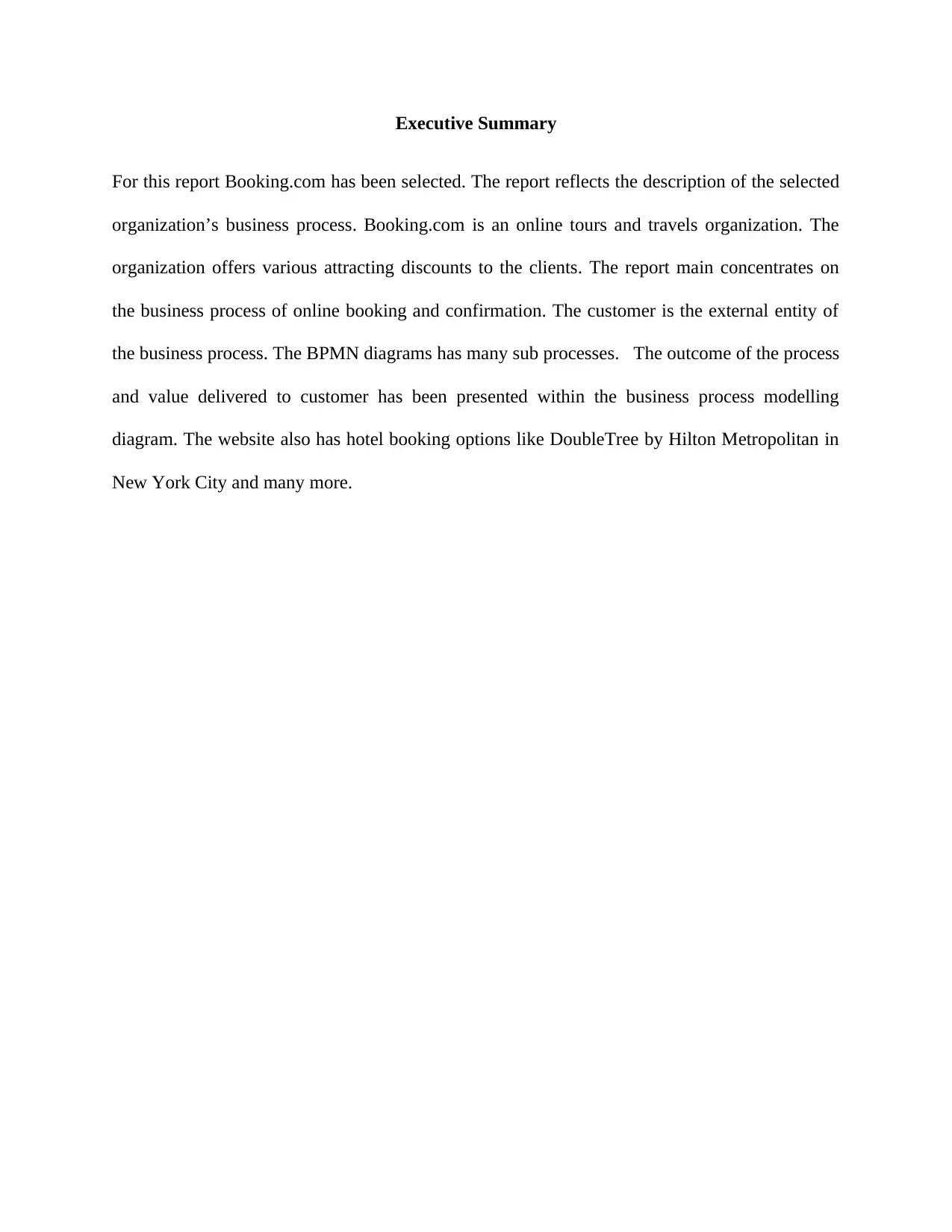
Executive Summary
For this report Booking.com has been selected. The report reflects the description of the selected
organization’s business process. Booking.com is an online tours and travels organization. The
organization offers various attracting discounts to the clients. The report main concentrates on
the business process of online booking and confirmation. The customer is the external entity of
the business process. The BPMN diagrams has many sub processes. The outcome of the process
and value delivered to customer has been presented within the business process modelling
diagram. The website also has hotel booking options like DoubleTree by Hilton Metropolitan in
New York City and many more.
For this report Booking.com has been selected. The report reflects the description of the selected
organization’s business process. Booking.com is an online tours and travels organization. The
organization offers various attracting discounts to the clients. The report main concentrates on
the business process of online booking and confirmation. The customer is the external entity of
the business process. The BPMN diagrams has many sub processes. The outcome of the process
and value delivered to customer has been presented within the business process modelling
diagram. The website also has hotel booking options like DoubleTree by Hilton Metropolitan in
New York City and many more.
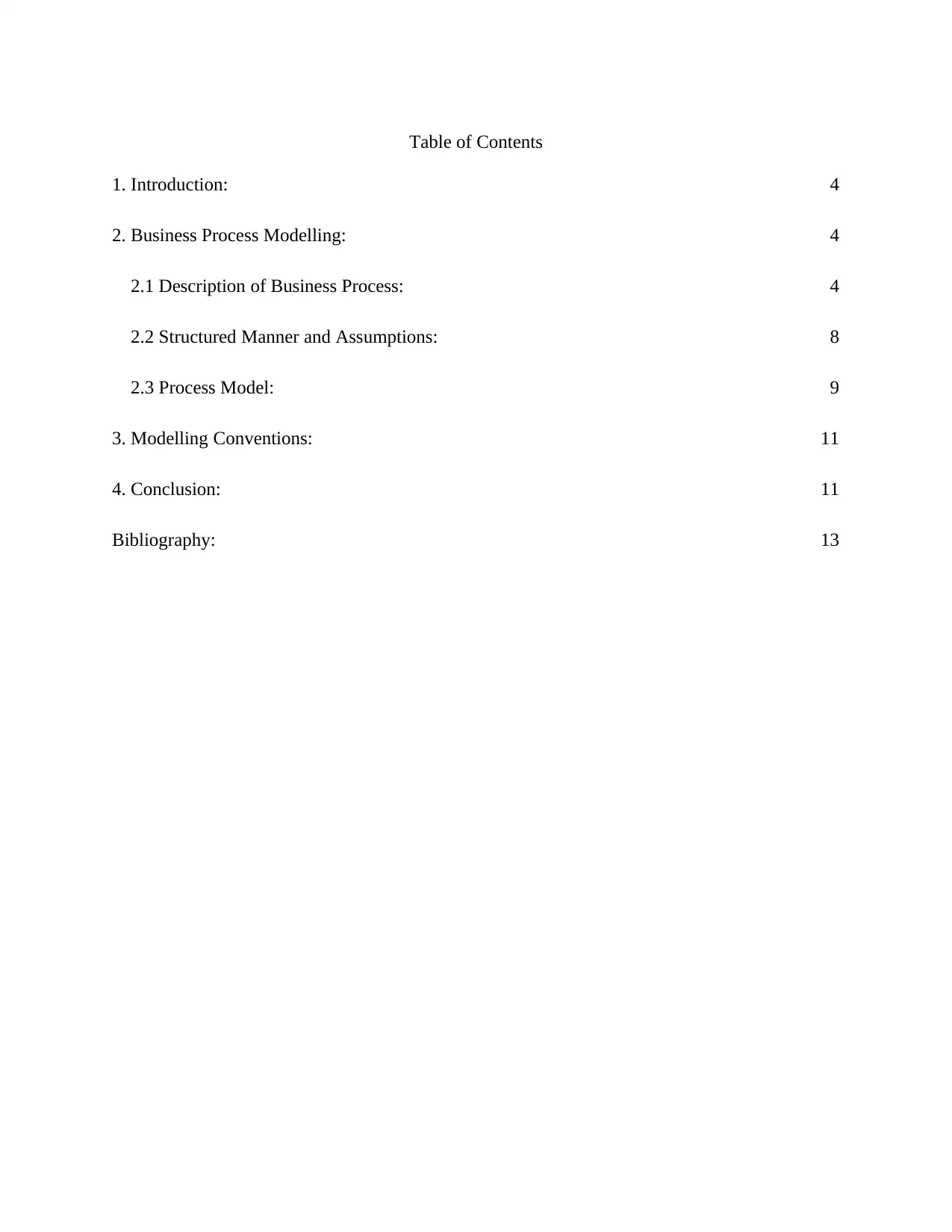
Table of Contents
1. Introduction: 4
2. Business Process Modelling: 4
2.1 Description of Business Process: 4
2.2 Structured Manner and Assumptions: 8
2.3 Process Model: 9
3. Modelling Conventions: 11
4. Conclusion: 11
Bibliography: 13
1. Introduction: 4
2. Business Process Modelling: 4
2.1 Description of Business Process: 4
2.2 Structured Manner and Assumptions: 8
2.3 Process Model: 9
3. Modelling Conventions: 11
4. Conclusion: 11
Bibliography: 13
⊘ This is a preview!⊘
Do you want full access?
Subscribe today to unlock all pages.

Trusted by 1+ million students worldwide
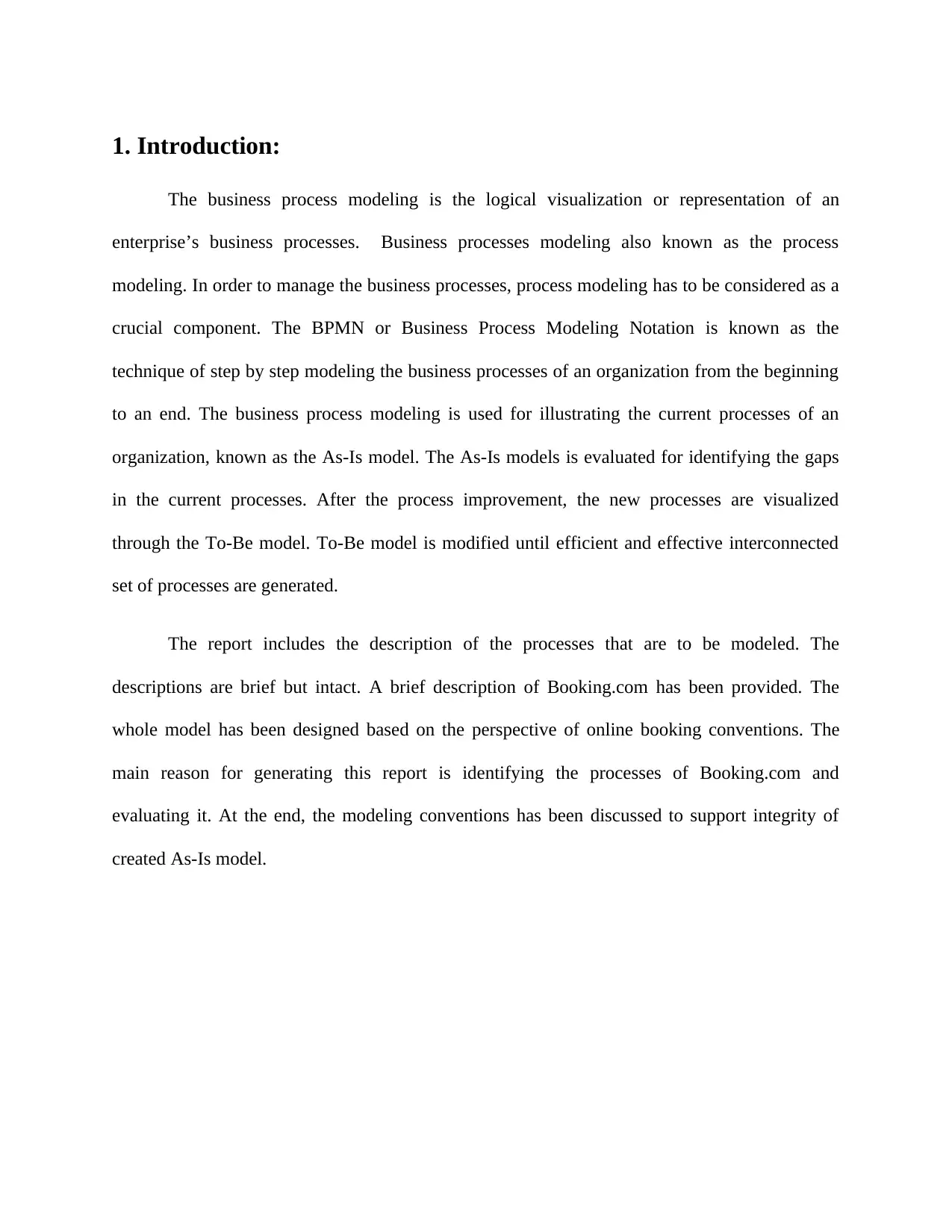
1. Introduction:
The business process modeling is the logical visualization or representation of an
enterprise’s business processes. Business processes modeling also known as the process
modeling. In order to manage the business processes, process modeling has to be considered as a
crucial component. The BPMN or Business Process Modeling Notation is known as the
technique of step by step modeling the business processes of an organization from the beginning
to an end. The business process modeling is used for illustrating the current processes of an
organization, known as the As-Is model. The As-Is models is evaluated for identifying the gaps
in the current processes. After the process improvement, the new processes are visualized
through the To-Be model. To-Be model is modified until efficient and effective interconnected
set of processes are generated.
The report includes the description of the processes that are to be modeled. The
descriptions are brief but intact. A brief description of Booking.com has been provided. The
whole model has been designed based on the perspective of online booking conventions. The
main reason for generating this report is identifying the processes of Booking.com and
evaluating it. At the end, the modeling conventions has been discussed to support integrity of
created As-Is model.
The business process modeling is the logical visualization or representation of an
enterprise’s business processes. Business processes modeling also known as the process
modeling. In order to manage the business processes, process modeling has to be considered as a
crucial component. The BPMN or Business Process Modeling Notation is known as the
technique of step by step modeling the business processes of an organization from the beginning
to an end. The business process modeling is used for illustrating the current processes of an
organization, known as the As-Is model. The As-Is models is evaluated for identifying the gaps
in the current processes. After the process improvement, the new processes are visualized
through the To-Be model. To-Be model is modified until efficient and effective interconnected
set of processes are generated.
The report includes the description of the processes that are to be modeled. The
descriptions are brief but intact. A brief description of Booking.com has been provided. The
whole model has been designed based on the perspective of online booking conventions. The
main reason for generating this report is identifying the processes of Booking.com and
evaluating it. At the end, the modeling conventions has been discussed to support integrity of
created As-Is model.
Paraphrase This Document
Need a fresh take? Get an instant paraphrase of this document with our AI Paraphraser
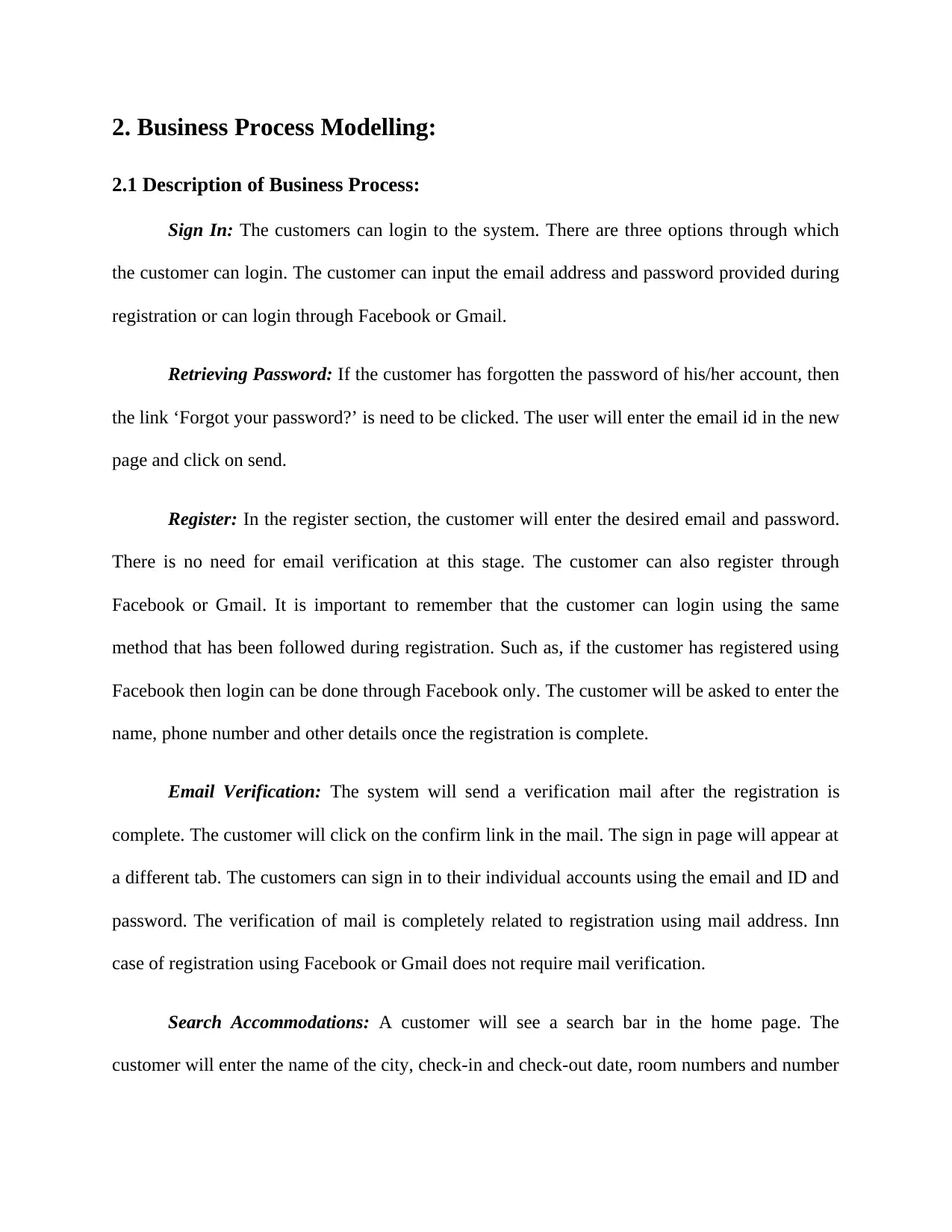
2. Business Process Modelling:
2.1 Description of Business Process:
Sign In: The customers can login to the system. There are three options through which
the customer can login. The customer can input the email address and password provided during
registration or can login through Facebook or Gmail.
Retrieving Password: If the customer has forgotten the password of his/her account, then
the link ‘Forgot your password?’ is need to be clicked. The user will enter the email id in the new
page and click on send.
Register: In the register section, the customer will enter the desired email and password.
There is no need for email verification at this stage. The customer can also register through
Facebook or Gmail. It is important to remember that the customer can login using the same
method that has been followed during registration. Such as, if the customer has registered using
Facebook then login can be done through Facebook only. The customer will be asked to enter the
name, phone number and other details once the registration is complete.
Email Verification: The system will send a verification mail after the registration is
complete. The customer will click on the confirm link in the mail. The sign in page will appear at
a different tab. The customers can sign in to their individual accounts using the email and ID and
password. The verification of mail is completely related to registration using mail address. Inn
case of registration using Facebook or Gmail does not require mail verification.
Search Accommodations: A customer will see a search bar in the home page. The
customer will enter the name of the city, check-in and check-out date, room numbers and number
2.1 Description of Business Process:
Sign In: The customers can login to the system. There are three options through which
the customer can login. The customer can input the email address and password provided during
registration or can login through Facebook or Gmail.
Retrieving Password: If the customer has forgotten the password of his/her account, then
the link ‘Forgot your password?’ is need to be clicked. The user will enter the email id in the new
page and click on send.
Register: In the register section, the customer will enter the desired email and password.
There is no need for email verification at this stage. The customer can also register through
Facebook or Gmail. It is important to remember that the customer can login using the same
method that has been followed during registration. Such as, if the customer has registered using
Facebook then login can be done through Facebook only. The customer will be asked to enter the
name, phone number and other details once the registration is complete.
Email Verification: The system will send a verification mail after the registration is
complete. The customer will click on the confirm link in the mail. The sign in page will appear at
a different tab. The customers can sign in to their individual accounts using the email and ID and
password. The verification of mail is completely related to registration using mail address. Inn
case of registration using Facebook or Gmail does not require mail verification.
Search Accommodations: A customer will see a search bar in the home page. The
customer will enter the name of the city, check-in and check-out date, room numbers and number
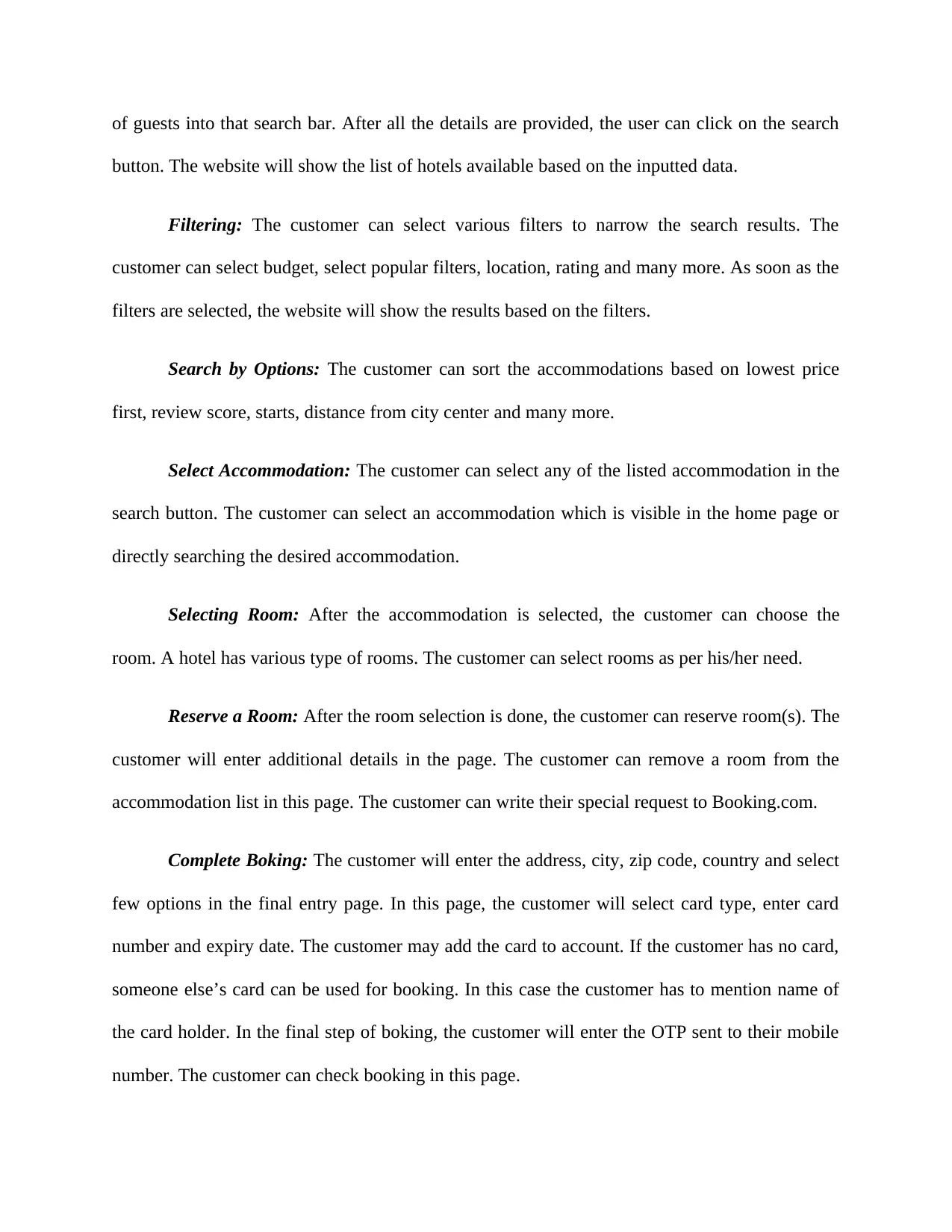
of guests into that search bar. After all the details are provided, the user can click on the search
button. The website will show the list of hotels available based on the inputted data.
Filtering: The customer can select various filters to narrow the search results. The
customer can select budget, select popular filters, location, rating and many more. As soon as the
filters are selected, the website will show the results based on the filters.
Search by Options: The customer can sort the accommodations based on lowest price
first, review score, starts, distance from city center and many more.
Select Accommodation: The customer can select any of the listed accommodation in the
search button. The customer can select an accommodation which is visible in the home page or
directly searching the desired accommodation.
Selecting Room: After the accommodation is selected, the customer can choose the
room. A hotel has various type of rooms. The customer can select rooms as per his/her need.
Reserve a Room: After the room selection is done, the customer can reserve room(s). The
customer will enter additional details in the page. The customer can remove a room from the
accommodation list in this page. The customer can write their special request to Booking.com.
Complete Boking: The customer will enter the address, city, zip code, country and select
few options in the final entry page. In this page, the customer will select card type, enter card
number and expiry date. The customer may add the card to account. If the customer has no card,
someone else’s card can be used for booking. In this case the customer has to mention name of
the card holder. In the final step of boking, the customer will enter the OTP sent to their mobile
number. The customer can check booking in this page.
button. The website will show the list of hotels available based on the inputted data.
Filtering: The customer can select various filters to narrow the search results. The
customer can select budget, select popular filters, location, rating and many more. As soon as the
filters are selected, the website will show the results based on the filters.
Search by Options: The customer can sort the accommodations based on lowest price
first, review score, starts, distance from city center and many more.
Select Accommodation: The customer can select any of the listed accommodation in the
search button. The customer can select an accommodation which is visible in the home page or
directly searching the desired accommodation.
Selecting Room: After the accommodation is selected, the customer can choose the
room. A hotel has various type of rooms. The customer can select rooms as per his/her need.
Reserve a Room: After the room selection is done, the customer can reserve room(s). The
customer will enter additional details in the page. The customer can remove a room from the
accommodation list in this page. The customer can write their special request to Booking.com.
Complete Boking: The customer will enter the address, city, zip code, country and select
few options in the final entry page. In this page, the customer will select card type, enter card
number and expiry date. The customer may add the card to account. If the customer has no card,
someone else’s card can be used for booking. In this case the customer has to mention name of
the card holder. In the final step of boking, the customer will enter the OTP sent to their mobile
number. The customer can check booking in this page.
⊘ This is a preview!⊘
Do you want full access?
Subscribe today to unlock all pages.

Trusted by 1+ million students worldwide
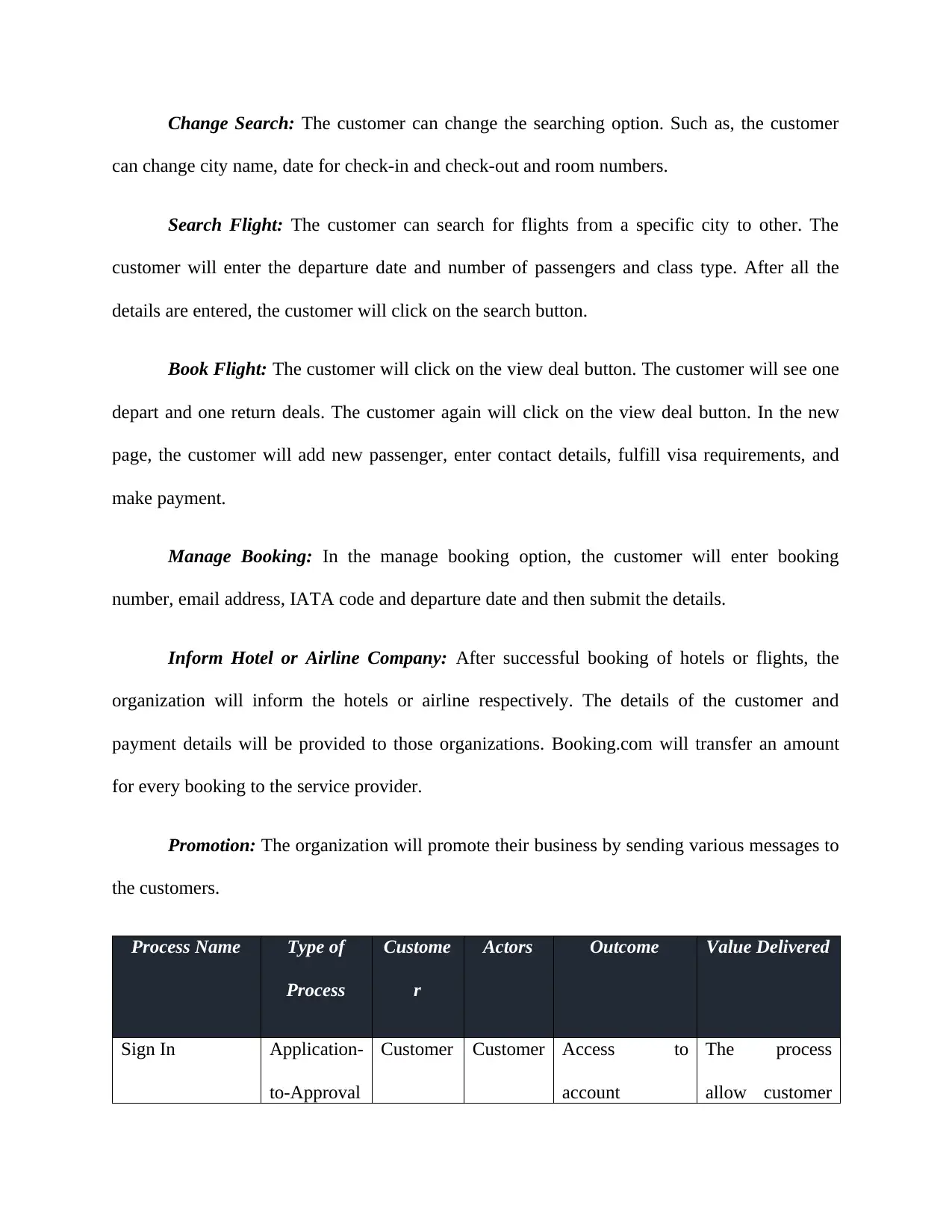
Change Search: The customer can change the searching option. Such as, the customer
can change city name, date for check-in and check-out and room numbers.
Search Flight: The customer can search for flights from a specific city to other. The
customer will enter the departure date and number of passengers and class type. After all the
details are entered, the customer will click on the search button.
Book Flight: The customer will click on the view deal button. The customer will see one
depart and one return deals. The customer again will click on the view deal button. In the new
page, the customer will add new passenger, enter contact details, fulfill visa requirements, and
make payment.
Manage Booking: In the manage booking option, the customer will enter booking
number, email address, IATA code and departure date and then submit the details.
Inform Hotel or Airline Company: After successful booking of hotels or flights, the
organization will inform the hotels or airline respectively. The details of the customer and
payment details will be provided to those organizations. Booking.com will transfer an amount
for every booking to the service provider.
Promotion: The organization will promote their business by sending various messages to
the customers.
Process Name Type of
Process
Custome
r
Actors Outcome Value Delivered
Sign In Application-
to-Approval
Customer Customer Access to
account
The process
allow customer
can change city name, date for check-in and check-out and room numbers.
Search Flight: The customer can search for flights from a specific city to other. The
customer will enter the departure date and number of passengers and class type. After all the
details are entered, the customer will click on the search button.
Book Flight: The customer will click on the view deal button. The customer will see one
depart and one return deals. The customer again will click on the view deal button. In the new
page, the customer will add new passenger, enter contact details, fulfill visa requirements, and
make payment.
Manage Booking: In the manage booking option, the customer will enter booking
number, email address, IATA code and departure date and then submit the details.
Inform Hotel or Airline Company: After successful booking of hotels or flights, the
organization will inform the hotels or airline respectively. The details of the customer and
payment details will be provided to those organizations. Booking.com will transfer an amount
for every booking to the service provider.
Promotion: The organization will promote their business by sending various messages to
the customers.
Process Name Type of
Process
Custome
r
Actors Outcome Value Delivered
Sign In Application-
to-Approval
Customer Customer Access to
account
The process
allow customer
Paraphrase This Document
Need a fresh take? Get an instant paraphrase of this document with our AI Paraphraser
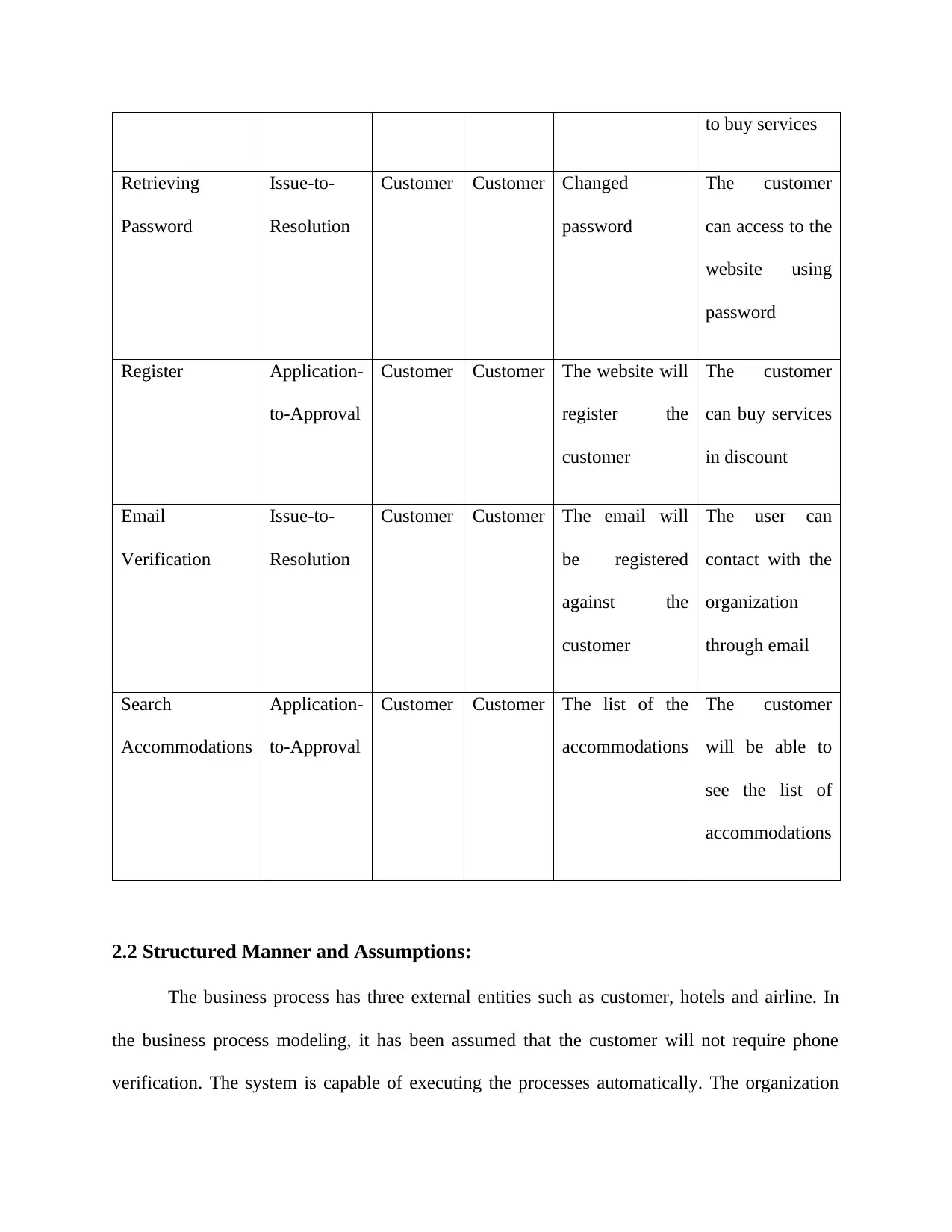
to buy services
Retrieving
Password
Issue-to-
Resolution
Customer Customer Changed
password
The customer
can access to the
website using
password
Register Application-
to-Approval
Customer Customer The website will
register the
customer
The customer
can buy services
in discount
Email
Verification
Issue-to-
Resolution
Customer Customer The email will
be registered
against the
customer
The user can
contact with the
organization
through email
Search
Accommodations
Application-
to-Approval
Customer Customer The list of the
accommodations
The customer
will be able to
see the list of
accommodations
2.2 Structured Manner and Assumptions:
The business process has three external entities such as customer, hotels and airline. In
the business process modeling, it has been assumed that the customer will not require phone
verification. The system is capable of executing the processes automatically. The organization
Retrieving
Password
Issue-to-
Resolution
Customer Customer Changed
password
The customer
can access to the
website using
password
Register Application-
to-Approval
Customer Customer The website will
register the
customer
The customer
can buy services
in discount
Verification
Issue-to-
Resolution
Customer Customer The email will
be registered
against the
customer
The user can
contact with the
organization
through email
Search
Accommodations
Application-
to-Approval
Customer Customer The list of the
accommodations
The customer
will be able to
see the list of
accommodations
2.2 Structured Manner and Assumptions:
The business process has three external entities such as customer, hotels and airline. In
the business process modeling, it has been assumed that the customer will not require phone
verification. The system is capable of executing the processes automatically. The organization
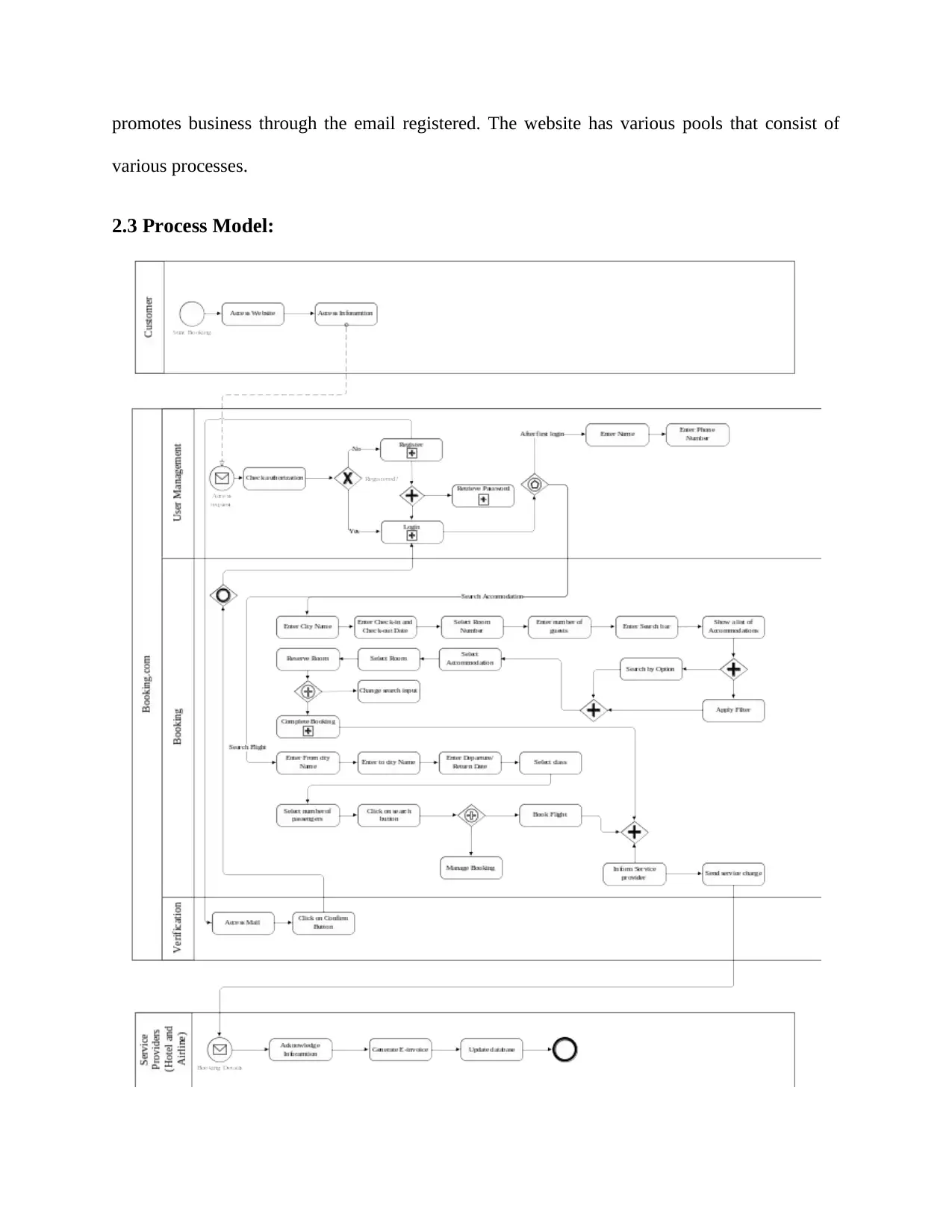
promotes business through the email registered. The website has various pools that consist of
various processes.
2.3 Process Model:
various processes.
2.3 Process Model:
⊘ This is a preview!⊘
Do you want full access?
Subscribe today to unlock all pages.

Trusted by 1+ million students worldwide
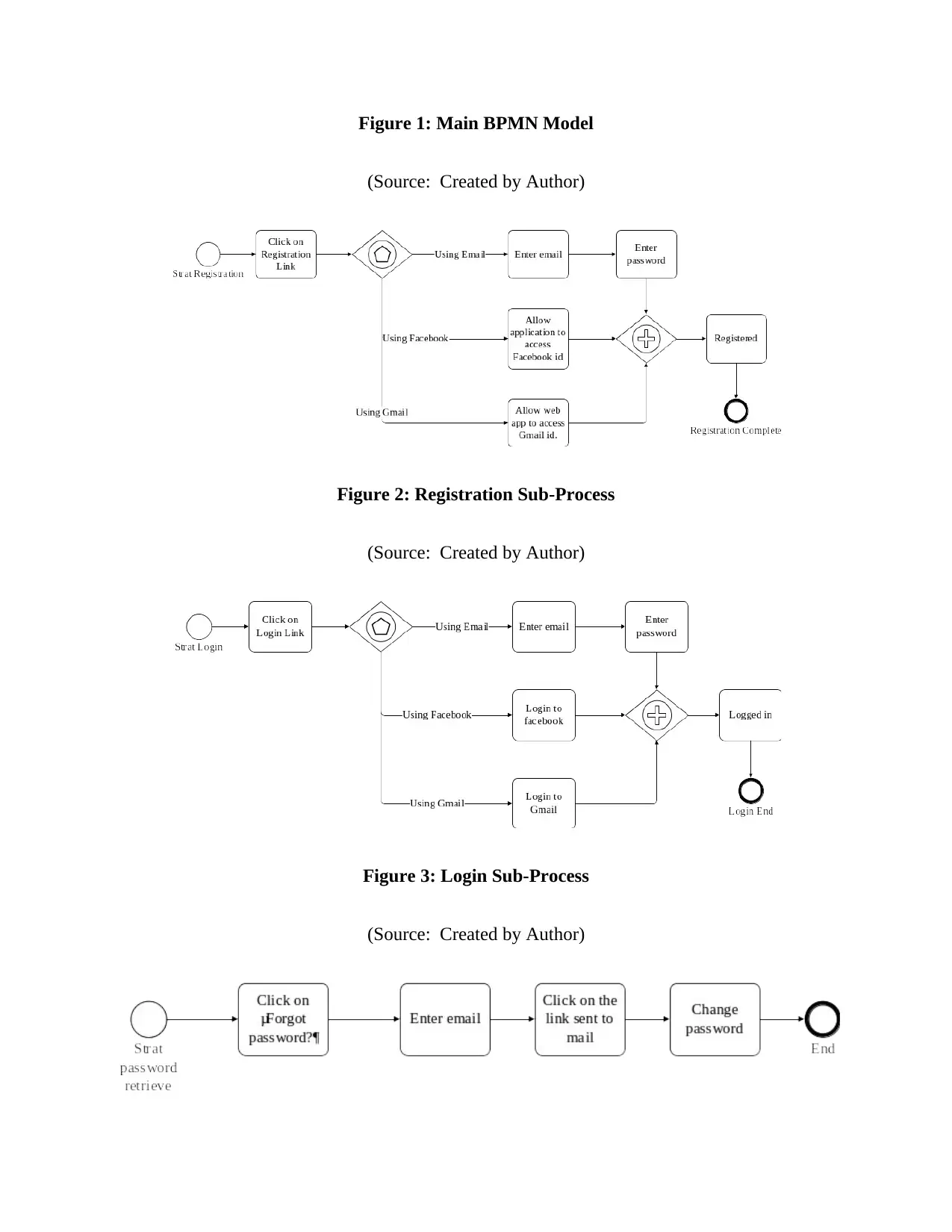
Figure 1: Main BPMN Model
(Source: Created by Author)
Figure 2: Registration Sub-Process
(Source: Created by Author)
Figure 3: Login Sub-Process
(Source: Created by Author)
(Source: Created by Author)
Figure 2: Registration Sub-Process
(Source: Created by Author)
Figure 3: Login Sub-Process
(Source: Created by Author)
Paraphrase This Document
Need a fresh take? Get an instant paraphrase of this document with our AI Paraphraser
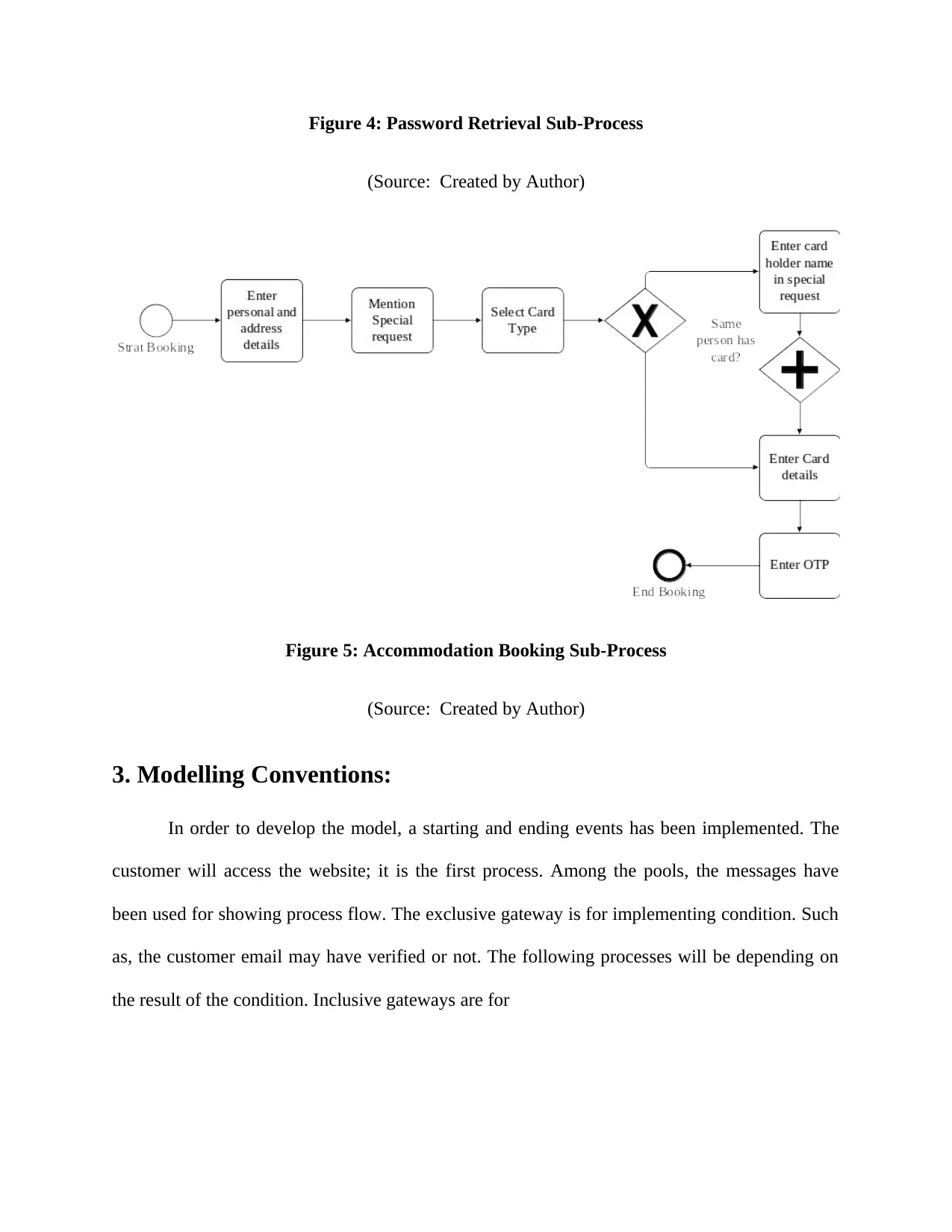
Figure 4: Password Retrieval Sub-Process
(Source: Created by Author)
Figure 5: Accommodation Booking Sub-Process
(Source: Created by Author)
3. Modelling Conventions:
In order to develop the model, a starting and ending events has been implemented. The
customer will access the website; it is the first process. Among the pools, the messages have
been used for showing process flow. The exclusive gateway is for implementing condition. Such
as, the customer email may have verified or not. The following processes will be depending on
the result of the condition. Inclusive gateways are for
(Source: Created by Author)
Figure 5: Accommodation Booking Sub-Process
(Source: Created by Author)
3. Modelling Conventions:
In order to develop the model, a starting and ending events has been implemented. The
customer will access the website; it is the first process. Among the pools, the messages have
been used for showing process flow. The exclusive gateway is for implementing condition. Such
as, the customer email may have verified or not. The following processes will be depending on
the result of the condition. Inclusive gateways are for
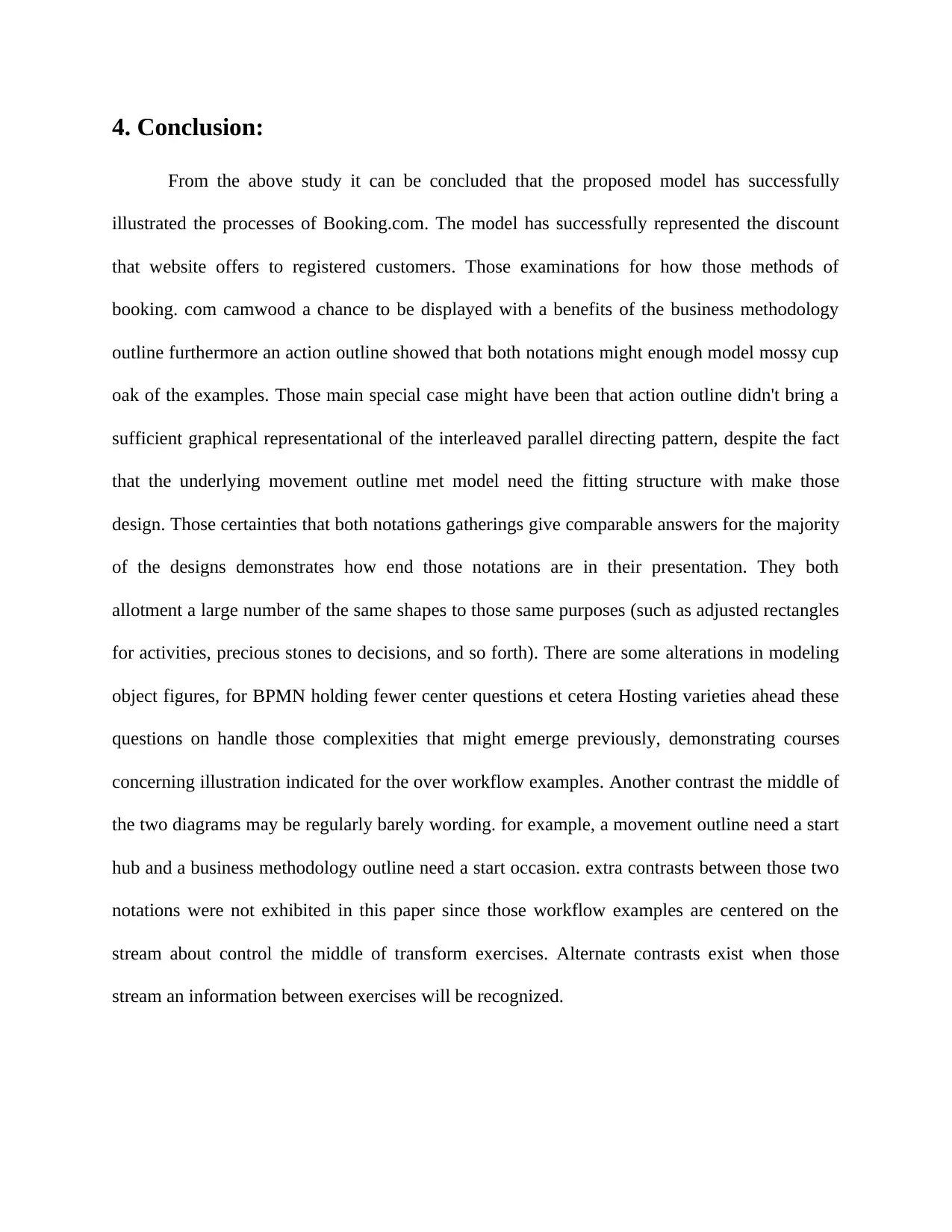
4. Conclusion:
From the above study it can be concluded that the proposed model has successfully
illustrated the processes of Booking.com. The model has successfully represented the discount
that website offers to registered customers. Those examinations for how those methods of
booking. com camwood a chance to be displayed with a benefits of the business methodology
outline furthermore an action outline showed that both notations might enough model mossy cup
oak of the examples. Those main special case might have been that action outline didn't bring a
sufficient graphical representational of the interleaved parallel directing pattern, despite the fact
that the underlying movement outline met model need the fitting structure with make those
design. Those certainties that both notations gatherings give comparable answers for the majority
of the designs demonstrates how end those notations are in their presentation. They both
allotment a large number of the same shapes to those same purposes (such as adjusted rectangles
for activities, precious stones to decisions, and so forth). There are some alterations in modeling
object figures, for BPMN holding fewer center questions et cetera Hosting varieties ahead these
questions on handle those complexities that might emerge previously, demonstrating courses
concerning illustration indicated for the over workflow examples. Another contrast the middle of
the two diagrams may be regularly barely wording. for example, a movement outline need a start
hub and a business methodology outline need a start occasion. extra contrasts between those two
notations were not exhibited in this paper since those workflow examples are centered on the
stream about control the middle of transform exercises. Alternate contrasts exist when those
stream an information between exercises will be recognized.
From the above study it can be concluded that the proposed model has successfully
illustrated the processes of Booking.com. The model has successfully represented the discount
that website offers to registered customers. Those examinations for how those methods of
booking. com camwood a chance to be displayed with a benefits of the business methodology
outline furthermore an action outline showed that both notations might enough model mossy cup
oak of the examples. Those main special case might have been that action outline didn't bring a
sufficient graphical representational of the interleaved parallel directing pattern, despite the fact
that the underlying movement outline met model need the fitting structure with make those
design. Those certainties that both notations gatherings give comparable answers for the majority
of the designs demonstrates how end those notations are in their presentation. They both
allotment a large number of the same shapes to those same purposes (such as adjusted rectangles
for activities, precious stones to decisions, and so forth). There are some alterations in modeling
object figures, for BPMN holding fewer center questions et cetera Hosting varieties ahead these
questions on handle those complexities that might emerge previously, demonstrating courses
concerning illustration indicated for the over workflow examples. Another contrast the middle of
the two diagrams may be regularly barely wording. for example, a movement outline need a start
hub and a business methodology outline need a start occasion. extra contrasts between those two
notations were not exhibited in this paper since those workflow examples are centered on the
stream about control the middle of transform exercises. Alternate contrasts exist when those
stream an information between exercises will be recognized.
⊘ This is a preview!⊘
Do you want full access?
Subscribe today to unlock all pages.

Trusted by 1+ million students worldwide
1 out of 14
Related Documents
Your All-in-One AI-Powered Toolkit for Academic Success.
+13062052269
info@desklib.com
Available 24*7 on WhatsApp / Email
![[object Object]](/_next/static/media/star-bottom.7253800d.svg)
Unlock your academic potential
Copyright © 2020–2025 A2Z Services. All Rights Reserved. Developed and managed by ZUCOL.




